#Netherlands export data
Explore tagged Tumblr posts
Text
Netherlands Major Exports: A Comprehensive Guide to Dutch Trade Power

The Netherlands has cemented its position as a global export powerhouse, thanks to its highly diversified export portfolio and world-class logistics infrastructure. Strategically located in Europe, the country is more than just a trade hub—it’s a vital engine for Europe’s economic growth. With goods ranging from energy and high-tech machinery to pharmaceuticals and food products, the Netherlands' export performance plays a central role in maintaining trade flow and economic resilience across the continent.
In this detailed guide, we’ll explore the Netherlands major exports, analyze recent Netherlands export data, and provide insight into Netherlands trade partners, along with mentions of Kenya import data and Uganda trade data for a broader international perspective.
Netherlands Export Industry Overview: Driving Global Trade
The Netherlands has a long-standing reputation for its robust export industry. In 2024, total Netherlands export value reached approximately $722.29 billion, despite a slight dip of 2% from the previous year. January 2025 saw exports valued at $69.8 billion, up marginally from $69.1 billion in December 2024.
The country’s efficient logistics network—anchored by the Port of Rotterdam, one of the busiest ports in the world—supports smooth transportation of goods across Europe and beyond. This logistical strength reinforces the Netherlands’ position as a primary export gateway within the EU and a critical facilitator of international commerce.
Top 10 Netherlands Major Exports You Should Know
Let’s explore the most significant Netherlands major exports that are driving its global trade reputation:
1. Mineral Fuels, Including Oil
At the top of the list, mineral fuels are one of the largest export segments. The Netherlands is a key supplier of refined petroleum products such as gasoline and diesel. The Port of Rotterdam is a central hub for refining and redistributing crude oil across Europe. This sector alone contributes a massive share to Netherlands export data, reflecting the country's importance in the global energy landscape.
2. Machinery, Including Computers
From semiconductor machinery to agricultural equipment, the Netherlands exports a wide array of industrial and computing devices. Tech companies like ASML have made the country a global leader in high-precision manufacturing. With major trade flows directed toward Germany, the U.S., and China, this category holds a prominent place in the Netherlands export economy.
3. Electrical Machinery and Equipment
This category includes everything from circuit boards and transformers to household electronics. High-tech manufacturing centers across the country produce goods for both domestic use and international shipment. The demand for Dutch electrical machinery remains strong, particularly in the European Union.
4. Optical, Technical, and Medical Apparatus
Dutch exports of medical and diagnostic equipment, such as imaging tools and surgical devices, are gaining global recognition. Innovation and quality control are critical to their success. Philips, a globally renowned Dutch brand, leads in this sector.
5. Pharmaceuticals
With a 14.9% growth rate in 2024, pharmaceuticals are the fastest-growing export category among the top ten. The Netherlands plays a vital role in the supply chain for branded and generic medications, vaccines, and biotech products, supplying markets like Germany and the United States.
6. Plastics and Plastic Articles
Plastics are another vital segment in the Netherlands export profile. The country exports industrial and consumer plastic products globally, with a focus on recyclable and environmentally friendly materials. Rotterdam and Chemelot serve as production hotspots.
7. Vehicles
Although not known for car manufacturing, the Netherlands serves as a central distribution point for vehicles within Europe. Cars, trucks, trailers, and bicycles are exported mainly to Germany, Belgium, and beyond. This re-export model is supported by the nation's outstanding port facilities.
8. Organic Chemicals
The Netherlands exports a wide range of organic chemicals such as alcohols, acids, and key industrial compounds. These chemicals are essential to various sectors including pharmaceuticals and agriculture. Advanced R&D and state-of-the-art production keep this sector globally competitive.
9. Other Chemical Goods
This includes products like fertilizers, paints, cosmetics, and cleaning agents. Dutch companies produce high-quality specialty chemicals that cater to global industrial and consumer markets. Europe remains the primary destination, followed by North America and Asia.
10. Dairy, Eggs, and Honey
The Netherlands is one of Europe’s largest agricultural exporters. Dairy products like cheese, milk powder, and butter, along with eggs and honey, enjoy robust demand in EU markets. Brands like FrieslandCampina reflect the country’s commitment to quality and sustainability.
Leading Netherlands Trade Partners in 2025
A key aspect of Netherlands export data is understanding where these goods are going. Below are the top Netherlands trade partners, contributing heavily to the country's export revenues:
Germany: The largest trading partner, accounting for over 22.5% of total exports.
Belgium: A close neighbor and logistics ally, contributing around 11%.
France, the UK, and the USA: These countries maintain strong bilateral trade relations with the Netherlands.
Other significant partners include Italy, Spain, Poland, Mainland China, and Sweden.
Together, these countries represent over 63% of the Netherlands’ total export value, showcasing the country’s reliance on well-established European and global trade ties.
Global Trade Connections: Kenya and Uganda
As international trade evolves, the Netherlands continues to foster export relationships beyond Europe. Emerging markets are increasingly important. For instance:
Kenya import data shows growing demand for pharmaceuticals, medical equipment, and agricultural machinery—sectors where Dutch exporters are highly competitive.
Uganda trade data reflects a rise in imports of dairy, plastics, and industrial machinery, further emphasizing opportunities for Dutch exporters in East Africa.
These partnerships highlight the Netherlands’ adaptability in global trade, extending its influence well beyond the EU.
How to Access Verified Netherlands Export Data
Whether you're a trader, analyst, or logistics professional, accessing accurate Netherlands export data is critical. This includes trade volumes, export values, top commodities, and partner countries. To obtain detailed and up-to-date trade statistics, consult reliable sources like Seair Exim Solutions, which offers curated data services and live market insights.
Need a list of buyers from the Netherlands or want to understand Netherlands exports by country? Seair Exim Solutions provides detailed HS code-level data, international trade reports, and business intelligence tailored to your needs.
Final Words: Why Netherlands Exports Matter
The Netherlands major exports are not just vital to its own economy but are essential cogs in the larger machinery of European and global trade. From energy and chemicals to electronics and food products, Dutch exports keep industries running and consumers supplied across continents.
As global trade dynamics shift, the Netherlands continues to lead with innovation, infrastructure, and insight. For accurate trade analysis, buyer lists, and market intelligence, trust the expertise of Seair Exim Solutions.
#Netherlands major exports#Netherlands export data#netherlands export#Netherlands trade partners#Netherlands trade data#Netherlands export products
0 notes
Text
One big clue that bilateral balances are meaningless is that the U.S. runs large trade surpluses with the Netherlands, the UAE, Hong Kong, and Singapore, even though all of those countries have massive trade surpluses with the world as a whole. The reason is simply that there are major ports in all of those places, and the U.S. data only show where exports land before they are shipped elsewhere. Cambodians and Vietnamese were hit with some of the highest “reciprocal” tariff rates even though they almost certainly import some goods from the U.S. via Singapore, as do Indonesians, Malaysians, and Thais. Yet those are wrongly counted as “Singaporean” imports. [...] Amusingly, Brazil, which was dinged in the report for having “relatively high tariffs on imports across a wide range of sectors” and a “lack of predictability with regard to tariff rates” ended up getting the lowest possible tariff rate of 10% because the U.S. happens to have a trade surplus with Brazil. Interestingly the disconnect between the apparent trade barriers and the actual trade data does not seem to have influenced the administration’s thinking on the relationship between trade barriers, bilateral trade balances, and net trade balances.
37 notes
·
View notes
Text
…trade missions and campaigns. Over €250,000 in public funds have been used to help Irish dairy giants push products in West Africa that are ‘putting its small scale farmers out of business’. That is according to a new investigation with DeSmog and Nigerian news outlet Premium Times on the impact of Ireland’s booming fat-filled milk powder (FFMP) industry. The team can also reveal that certain brands are targeting advertising at Nigeria, Ghana and Senegal’s parents, claiming the product is good for their children. It follows an investigation last year by The Journal Investigates and Premium Times exposing how large volumes of the cheap substitute ‘milk’ was being exported to West Africa, outcompeting local milk on price. Fat-filled milk powder is made by spray-drying skimmed milk combined with vegetable fats like palm or coconut oil because its dairy fats were removed to make more profitable products like butter. It cannot be sold in the EU as ‘milk’ because of the addition of palm or vegetable oil – with the vast majority shipped outside of Europe. While countries like the Netherlands, Germany, France and Poland also export FFMP, Ireland is by far the biggest player, exporting 30% of the EU’s FFMP. Lakeland Dairies, Tirlán and Ornua, which had a combined turnover of €7.8bn in 2024, were the top exporters of FFMP to Nigeria and Ghana from 2021 to 2024 according to Volza export-import trade data. None of three companies responded to the team’s requests for comment.
continue reading
#ireland#west africa#fat-filled milk powder (FFMP)#eu neocolonialism#west african farmers#outcompeted#lactose intolerance#health
2 notes
·
View notes
Text
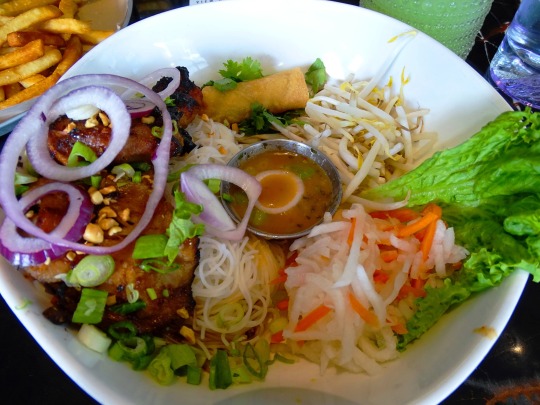



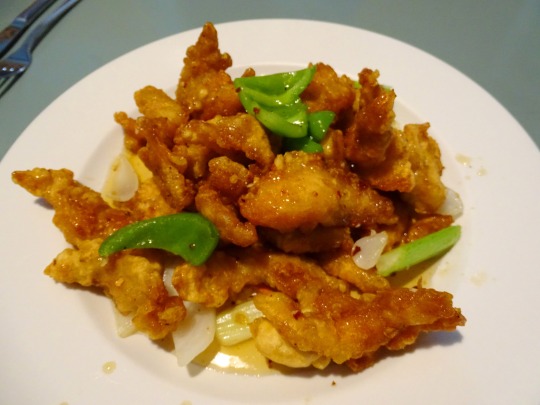






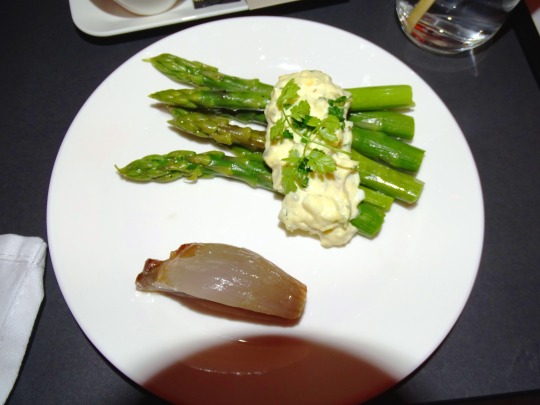

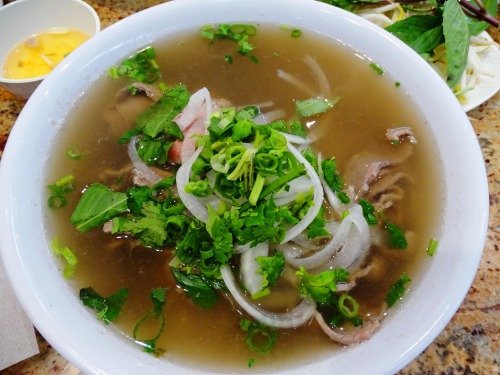
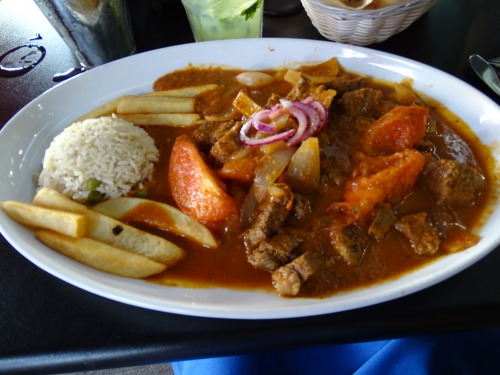





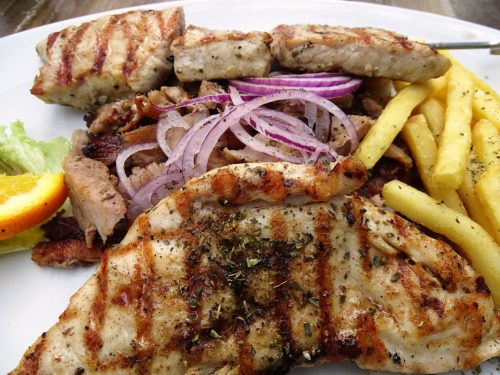








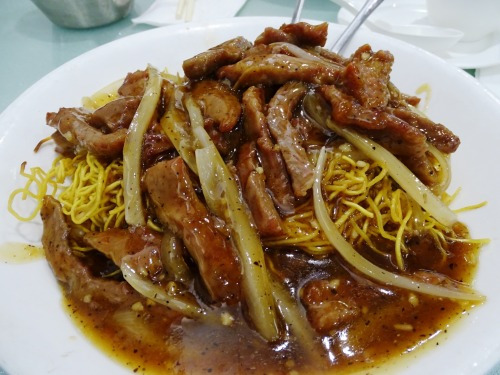
National Onion Day
Today, farmers in the United States are collecting millions of onions. They will be heading for store shelves to provide families with the fresh, nutritional, tasty power to improve meals and boost the body’s immunity. Onions have numerous advantages, such as enhancing meals with a variety of flavors. According to recent research, consuming onions also helps the body fight colorectal cancer and breast cancer, as well as heart disease and diabetes.
National Onion Day commemorates the incorporation of the National Onion Association in 1913. The organization was created to protect the interests of America’s onion growers, and onions remain their business to this day. Today, the group represents over 500 onion producers, shippers, packers, and suppliers across the country.
History of National Onion Day
In June 2022, the National Onion Association established National Onion Day to commemorate the organization’s 53rd anniversary. They officially incorporated on June 27, 1913, in Ohio, and represent almost 500 onion farmers, shippers, packers, and allied members across the U.S.
Onions are one of the world’s oldest cultivated vegetables, having originated in Central Asia and spread around the world. Some researchers believe the onion has been cultivated for at least 5,000 years. Onions were possibly eaten for thousands of years and cultivated all over the world at the same time, since they grew wild in different locations.
We rely on the onion to improve the flavor of our savory meals, whether we use a sweet, white, red, or ever-popular yellow onion. They complement meats and salads, making the versatile onion a culinary powerhouse. It’s the needed seasoning alongside our salt and pepper, whether added to eggs or pickled. While the onion is low in calories, it is also high in vitamin C and antioxidants, and can increase your dietary fiber and vitamin B6 intake. Unlike many other low-calorie ingredients, onions provide a high nutritional content without compromising flavor. And it makes no difference what you do to it; pickled or raw, caramelized, sauteed, or pureed — the onion adds a lot of flavor to a dish. With so many types to choose from, onions present numerous opportunities to reap the benefits.
National Onion Day timeline
3500 B.C. The Onion is First Traced in Egypt
The history of the onion can be traced back to this period, with a Sumerian document describing someone being in awe of the city governor’s onion garden.
1500 B.C. Ancient Egypt Worships Onions
To those who bury onions alongside their pharaohs, onions are a sign of eternity.
1913 National Onion Association Is Founded
On June 2, the National Onion Association is formally incorporated in Ohio.
2019 National Onion Day is First Celebrated
The National Onion Association establishes National Onion Day on June 27, to honor onion producers.
National Onion Day FAQs
Is an onion a vegetable or a fruit?
The vegetables are classified based on the edible part of the plant: leaves (like lettuce), roots (like carrot), bulbs (such as onions), and many others. Alternatively, fruits such as tomatoes and seeds such as peas are commonly referred to as vegetables.
Which country is the largest onion exporter?
According to FY18 data, China appears to be the top onion producer, but the Netherlands is the largest onion exporter.
Do onions aid in the treatment of infections?
Onions were worshiped for their medicinal powers by various civilizations. They have anti-inflammatory properties, relieve joint pain, treat ear infections, work as an antibiotic, and are an excellent expectorant for loosening up thick phlegm.
National Onion Day Activities
Add fresh onion to your favorite recipe
Learn how to grow onions in your backyard
Share the celebration on social media
For a flavor boost, be sure to add some onion in there. No matter how you slice it, onion pulls together some of the greatest flavors! Tell us how you like to cook your onions!
Gardening is fun! Furthermore, if you can cultivate some veggies like onions in your backyard, you can reduce the cost of your monthly groceries by harvesting them yourself.
Be sure to spread the word about National Onion Day by using the hashtag #NationalOnionDay on social media. Also, don’t forget to brag about your onion recipe or how you harvested your own onions.
5 Interesting Facts About Onion
They’ve been around for thousands of years
Sulfuric acid
Onions were worshiped by Ancient Egyptians
The biggest onion ever
The Big Onion
Onions have been present for thousands of years and, around 3,500 B.C, onions were harvested for the first time.
The reason you become teary-eyed when cutting onions is because of the sulfuric acid they contain.
They claimed that the spherical shape and concentric circles represented eternity — onions were used to cover the tombs of their monarchs and were important in ritual burials.
According to ‘The Guinness Book of World Records’, the biggest onion ever was cultivated by Peter Glazebrook, a British farmer, who grew a massive onion in 2011 that weighed just under 18 pounds.
Before it was known as the Big Apple, New York was known as the Big Onion, because it was a place where you could peel layer after layer without touching the center, kind of like an onion.
Why We Love National Onion Day
It encourages cultivation
It promotes culinary creativity
It boosts the immune system
Onions are an important, and healthy part of our diet. Why not grow and cultivate your own in your backyard?
Who would have thought onions, known for making us cry, could be so sweet and delectable with some creativity? These days, almost all culinary innovations use onion for a unique flavor.
Onions are rich in prebiotics. This helps to increase friendly bacteria in your guy, which helps to build immunity against viruses.
Source
#Ginger & Green Onion Beef#Honey Pepper Chicken#Szechuan Beef#Bacon Mushroom Mike Burger#Lemongrass Chicken Bowl#Full Back Ribs Rack#Brisket Burger#BBQ Bacon Burger#Colossal Supreme Burger#Chicken Lickin' Good Burger#Lomo Saltado#vacation#USA#food#Chow Line#Pho Tai#Beef Black Pepper#Crispy Rice Noodle Tower#Pavla Plate#Green Chile Burger#National Onion Day#27 June#travel#original photography#Canada#Fire Jumper Burger#Roast beef with remoulade & fried onions Smörrebröd#NationalOnionDay
3 notes
·
View notes
Text
Soybean Export from India: Trends, Data, & Market Outlook for 2025

India's agricultural exports continue to gain momentum, with soybean standing as a key contributor. Known for its high nutritional value and diverse industrial applications, soybeans play a pivotal role in the global agri-commodity market. As the world’s demand for plant-based proteins and sustainable oils increases, India's position as a significant player in soybean exports strengthens. This article delves into the current trends in soybean export from India, examines soybean export data, highlights key soybean exporters in India, and explores major soybean-exporting countries for 2024-2025.
The Landscape of Soybean Export from India
India has emerged as a prominent exporter of soybeans, contributing significantly to global trade. Factors such as robust agricultural policies, advancements in farming techniques, and a focus on export-oriented production have bolstered India's soybean export capabilities.
In the 2024-2025 period, soybean exports from India are expected to grow due to increasing international demand. Indian soybeans are sought after for their quality, competitive pricing, and adherence to international standards. The primary export destinations for Indian soybeans include Southeast Asia, the Middle East, and European countries.
Soybean Export Data for 2024-2025
Tracking soybean export data reveals significant insights into India’s performance in the global market.
Volume and Value of Exports: India exported approximately 2.5 million metric tons of soybeans in the fiscal year 2023-2024, generating over $1.2 billion in revenue. The 2024-2025 projections suggest a 10-12% growth, driven by increasing demand from new and existing markets.
Major Importers of Indian Soybeans:
Indonesia and Vietnam: These countries use Indian soybeans primarily for feed and food processing industries.
United Arab Emirates (UAE): A significant importer due to its booming food industry and demand for plant-based products.
European Union (EU): Particularly Germany and the Netherlands, where soybeans are used for biofuels and plant-based protein products.
Export Growth Drivers:
India’s strategic position in Asia ensures shorter shipping times to key markets.
Increased global preference for non-GMO soybeans, a segment where India has an advantage.
Key Soybean Exporters in India
India’s soybean export industry is supported by numerous stakeholders, including farmers, processing companies, and export houses top soybean exporters in India are.
SOPA (Soybean Processors Association of India): SOPA plays a vital role in promoting soybean exports from India. It ensures the quality and branding of Indian soybeans, making them competitive in global markets.
Major Exporting Companies:
ITC Limited: Known for its robust supply chain and adherence to quality standards.
Adani Wilmar: A significant player in agri-exports, including soybeans and soy-derived products.
Ruchi Soya Industries: One of India's largest exporters, supplying non-GMO soybeans globally.
Emerging Players: Smaller exporters and agri-tech startups have also entered the market, leveraging technology to enhance productivity and streamline exports.
India’s Position Among Soybean Exporting Countries
Globally, India ranks among the top 10 soybean exporting countries. However, countries like Brazil, the United States, and Argentina dominate the export landscape.
Global Competitors:
Brazil: The world’s largest soybean exporter, primarily supplying China.
United States: A major exporter with advanced farming technology and extensive trade networks.
Argentina: Known for its high-quality soymeal exports.
India’s Competitive Edge:
Organic and non-GMO soybeans.
Competitive pricing compared to Western exporters.
Proximity to Asian and Middle Eastern markets.
Challenges in Competing Globally: While India has advantages, challenges such as inconsistent yield, fluctuating prices, and logistical issues need addressing to solidify its global standing.
Emerging Trends and Opportunities in Soybean Export
The soybean industry is undergoing transformation due to changing consumer preferences and technological advancements. Key trends for 2024-2025 include:
Shift to Plant-Based Diets: The rise of veganism and plant-based diets globally is driving demand for soy products, including tofu, soy milk, and soy protein isolates.
Sustainability and Traceability: Exporters focusing on sustainable farming and traceability in supply chains will have a competitive edge in international markets.
Government Support: Initiatives such as export incentives, enhanced logistics, and trade agreements are expected to boost soybean exports.
Value-Added Soy Products: Diversifying into soy-derived products like soymeal, soy oil, and soy protein can open new revenue streams for Indian exporters.
Challenges Facing Soybean Export from India
Despite its growth potential, the industry faces several hurdles:
Climate Change: Unpredictable weather patterns can impact crop yields.
Infrastructure Bottlenecks: Limited storage and transportation facilities hinder efficient exports.
Price Volatility: Global soybean prices are influenced by geopolitical and economic factors, impacting Indian exports.
Addressing these challenges through policy reforms and industry collaboration will be critical for sustained growth.
Future Outlook for Soybean Export from India
The future of soybean exports from India looks promising. With the global demand for soybeans expected to rise by 15-20% in the next decade, India has the opportunity to enhance its market share. Key strategies for growth include:
Investing in sustainable farming practices.
Strengthening trade relations with emerging markets like Africa and Latin America.
Promoting value-added soy products through branding and innovation.
Conclusion
Soybean export from India are poised for remarkable growth in the 2024-2025 period. By leveraging its strengths in quality production and strategic geographic positioning, India can expand its footprint in the global soybean market. However, addressing challenges like climate change, infrastructure, and price volatility will be essential for realizing its full potential. With the concerted efforts of farmers, exporters, and policymakers, India is set to cement its position as a leading player in the global soybean trade.
#soybean export from India#soybean export data#soybean exporters in India#soybean exporting countries#trade data#global trade data#international trade
2 notes
·
View notes
Text
A group of German civil servants have written to Chancellor Olaf Scholz and other senior ministers calling on the government to “cease arm deliveries to the Israeli government with immediate effect”.
“Israel is committing crimes in Gaza that are in clear contradiction to international law and thus to the Constitution, which we are bound to as federal civil servants and public employees”, the statement says, citing the International Court of Justice’s ruling in January that Israel’s military actions are “plausible acts of genocide”.
According to the organisers of the five-page statement, around 600 civil servants have voiced support for the initiative[...]
The statement also requested that the German government pressure Israel for an immediate ceasefire in the Gaza Strip; that it renew payments to the United Nations Relief and Works Agency for Palestine Refugees (UNRWA); and that it “actively and resolutely advocates for the recognition of a Palestinian state” within the internationally recognised 1967 borders.
In 2023, Germany approved arms exports to Israel worth 326.5 million euros ($354m), a tenfold increase compared to the previous year, providing 30 percent of the Israeli military’s weapons, according to data from the Stockholm International Peace Research Institute. [...]
The civil servants sent the statement via email to ministries last week, with the disclaimer that “due to the sensitive content and the excessive state repression that criticism in this area is met with, we want to remain anonymous”. [...]
Signees reportedly include a wide range of civil servants from across different ministries, skewing towards younger women and people with international experience or biographies “outside of the German bubble”. [...]
The group will publish the statement on social networking site LinkedIn on April 8, when Germany will be defending itself at the Hague against charges brought by Nicaragua that Germany’s support for Israel violates the Genocide Convention. [...]
[One] initiator of the German civil servants’ statement, a trained jurist, expressed fear not just of losing employment for being involved in the statement, but of prosecution and even imprisonment, citing the “utterly lawless situation” in the country post-October 7 where people are arrested, sometimes brutally, with spurious legal justifications. “There are no rights in Germany at the moment when it comes to Palestine,” the initiator said.
“We wrote this letter because …. this scale of destruction and violence, the atrocities we are seeing are unprecedented in recent times. This is a huge threat to all of our democratic systems if we justify killing thousands of children,” the initiator said, adding that senior ministers were creating a “collective governmental gaslighting of what we are seeing on the ground”.
Germany’s foreign ministry did not respond immediately to a request for comment.
1 note
·
View note
Text
Cyclohexane Prices, Trends & Forecasts | Provided by Procurement Resource
Cyclohexane (C6H12) is a colorless fluid with a mild sweet smell. It is partially soluble in water and completely in alcohol, acetone, benzene, ethanol, ethyl ether, olive oil, and carbon tetrachloride. The melting point of this volatile compound ranges around 6.47 °C and the boiling point measures around 80.7° C. It is an alicyclic hydrocarbon comprised of 6 carbon atoms formed in a hexagon arrangement. Cyclohexane is a flammable fluid, non-corrosive. The dehydration of cyclohexanol and using concentrated phosphoric acid results in the production of cyclohexane.
Request for Real-Time Cyclohexane Prices: https://procurementresource.com/resource-center/cyclohexane-price-trends/pricerequest
The key importing countries include Vietnam, India, and the Netherlands. On the other hand, the primary exporting countries are Vietnam, Germany, and Belgium.
Key Details About the Cyclohexane Price Trends:
Procurement Resource does an in-depth analysis of the price trend to bring forth the monthly, quarterly, half-yearly, and yearly information on the Cyclohexane price in its latest pricing dashboard. The detailed assessment deeply explores the facts about the product, price change over the weeks, months, and years, key players, industrial uses, and drivers propelling the market and price trends.
Each price record is linked to an easy-to-use graphing device dated back to 2014, which offers a series of functionalities; customization of price currencies and units and downloading of price information as excel files that can be used offline.
The cyclohexane price trends, including India Cyclohexane price, USA Cyclohexane price, pricing database, and analysis can prove valuable for procurement managers, directors, and decision-makers to build up their strongly backed-up strategic insights to attain progress and profitability in the business.
Industrial Uses Impacting Cyclohexane Price Trends:

Cyclohexane is used commercially as a solvent to dissolve cellulose, ether, fats, waxes, spot removers, cellulosic, natural and synthetic resins, lacquers, and crude rubber. It is also used to manufacture perfumes, nylon 66 produced by a synthesis of adipic acid, plastics, paint, varnish remover, and much more.
Furthermore, Cyclohexane is used to make solid fuel for camp stoves, recrystallize medium glass substitutes, solid fuels, and adhesives. It synthesizes chemicals like benzene, cyclohexyl chloride, cyclohexanol, cyclohexanone, nitro-Cyclohexane, and many other chemical compounds for large-scale production. Here benzene and cyclopentane are the significant chemicals produced by Cyclohexane specifically.
Key Players:
BASF SE
Chevron Phillips Chemical Company
ExxonMobil Chemical Holland B.V.
Henan GP Chemicals Co., Ltd.
News & Recent Development
Date: 10 April 2023- RUDN experts to find a new catalyst that provides more efficient oxidation of Cyclohexane. The process produces adipic acid which is used in manufacturing household chemicals, food additives and other substances.
About Us:
Procurement Resource offers in-depth research on product pricing and market insights for more than 500 chemicals, commodities, and utilities updated daily, weekly, monthly, and annually. It is a cost-effective, one-stop solution for all your market research requirements, irrespective of which part of the value chain you represent.
We have a team of highly experienced analysts who perform comprehensive research to deliver our clients the newest and most up-to-date market reports, cost models, price analysis, benchmarking, and category insights, which help in streamlining the procurement process for our clientele. Our team tracks the prices and production costs of a wide variety of goods and commodities, hence, providing you with the latest and consistent data.
To get real-time facts and insights to help our customers, we work with a varied range of procurement teams across industries. At Procurement Resource, we support our clients, with up-to-date and pioneering practices in the industry, to understand procurement methods, supply chain, and industry trends, so that they can build strategies to achieve maximum growth.
Contact Us:
Company Name: Procurement Resource Contact Person: Chris Byrd Email: [email protected] Toll-Free Number: USA & Canada – Phone no: +1 307 363 1045 | UK – Phone no: +44 7537 132103 | Asia-Pacific (APAC) – Phone no: +91 1203185500 Address: 30 North Gould Street, Sheridan, WY 82801, USA
1 note
·
View note
Text
Tata Group Companies List: A Comprehensive Overview of India’s Premier Business Conglomerate
The Tata Group companies list exemplifies the breadth and depth of India’s foremost industrial conglomerate. Established in 1868 by industrial pioneer Jamsetji Tata, the Tata Group has become synonymous with trust, innovation, and long-term value creation. Headquartered in Mumbai, the group operates across more than 100 countries, with a diverse portfolio spanning key sectors such as automotive, steel, IT services, power, consumer goods, telecommunications, and hospitality.
This detailed overview outlines the principal companies within the Tata Group companies list, categorised by sector and strategic function.

Major Tata Group Companies by Sector
Tata Consultancy Services (TCS)
Sector: Information Technology and Business Services
TCS is India’s leading IT services exporter and a global provider of consulting-led enterprise solutions. It offers services in cloud computing, AI, and enterprise automation. As the most valuable company under the Tata Group companies list, TCS contributes significantly to the group’s revenue and global footprint.
Tata Motors
Sector: Automotive Engineering and Manufacturing
Tata Motors is engaged in the design and manufacture of vehicles ranging from commercial trucks to electric passenger cars. Its acquisition of Jaguar Land Rover has positioned it as a key player in the international automotive market.
Tata Steel
Sector: Metals and Mining
With operations in India, the UK, and the Netherlands, Tata Steel ranks among the top steel-producing firms globally. It is a major supplier to sectors including construction, infrastructure, and engineering, reinforcing the strategic significance of its inclusion in the Tata Group companies list.
Tata Power
Sector: Energy and Renewables
Tata Power operates across the power value chain—from generation to distribution—with increasing investments in solar and wind energy. The company is actively contributing to India’s clean energy transition and energy security.
Tata Chemicals
Sector: Industrial Chemicals and Agribusiness
Tata Chemicals manufactures soda ash, urea, and other chemical derivatives essential for agriculture and industrial production. It also plays a role in food nutrition and crop protection.
Tata Consumer Products
Sector: Fast-Moving Consumer Goods (FMCG)
This entity oversees prominent Indian brands like Tata Tea, Tata Salt, and Tata Sampann, aiming to scale consumer-facing product innovation in the food and beverage domain.
Titan Company
Sector: Lifestyle and Luxury Retail
Titan operates leading lifestyle brands including Tanishq, Fastrack, and Titan Watches. The company continues to expand in jewellery, eyewear, and personal accessories.
Trent Ltd.
Sector: Retail and Fashion
Trent operates retail formats such as Westside and Zudio, catering to the evolving urban consumer demographic with affordable fashion and home goods.
Tata Communications
Sector: Telecommunications and Digital Infrastructure
Tata Communications provides international voice and data services, global WAN solutions, and enterprise cloud connectivity, supporting multinational corporations with mission-critical infrastructure.
Indian Hotels Company Ltd (IHCL)
Sector: Hospitality and Tourism
IHCL owns and operates premium hotel brands including Taj, Vivanta, and Ginger, offering high-end and mid-scale hospitality services across domestic and international locations.
Air India
Sector: Aviation and Aerospace
Reacquired by Tata Group in 2022, Air India is undergoing significant restructuring aimed at achieving operational excellence and global competitiveness in commercial aviation.
Conclusion
The Tata Group companies list encapsulates the operational scope and strategic diversification of one of India’s most enduring industrial legacies. Each subsidiary contributes uniquely to the group's overarching vision of sustainable, responsible, and inclusive growth. From foundational industries like steel and power to cutting-edge domains like digital transformation and clean energy, the Tata Group continues to set benchmarks in corporate governance, technological innovation, and socio-economic development across the globe.
0 notes
Text
What Should You Know About Patchouli Oil Export and Import?

Are you curious how patchouli oil moves across global markets, who exports it, what the latest patchouli oil import data reveals, or which countries dominate this fragrant trade? This comprehensive Q&A article explores everything you need to know about patchouli oil, from the leading exporting countries to essential shipment data. Drawing from in-depth analysis and the latest trade insights—including insights from IndonesiaTradeData[^]—this guide unpacks the industry in an actionable, easy-to-understand format for businesses and individuals alike.
1. What Is Patchouli Oil and Why Is It in High Demand Globally?
Patchouli oil is a distinctive essential oil known for its deep, earthy scent and wide use in perfumery, cosmetics, aromatherapy, and even flavorings. Extracted from the leaves of the Pogostemon cablin plant, patchouli oil plays a vital role in the global fragrance and personal care sectors.
Key uses: perfumes, skin care, incense, home care products.
Unique properties: long-lasting fragrance, fixative qualities in perfumes, antimicrobial benefits.
Growing demand, particularly from luxury and wellness product manufacturers, underpins robust patchouli oil export and import volumes worldwide.
2. Which Countries Lead in Patchouli Oil Export?
The patchouli oil exporting countries include:
Indonesia remains the dominant force in patchouli oil production and export, accounting for more than 80% of global supply. Major production centers have shifted in recent years from Java and Sumatra to Sulawesi.
India: Another substantial exporter, known for both its indigenous production and re-export of processed oils.
Other exporters: Spain, France, China, Malaysia, Vietnam, and West African nations export patchouli oil but on a much smaller scale.
Rank Exporting Country Share of Global Volume (%) 1 Indonesia 80–85 2 India ~10–15 3 Singapore 5 4+ Others <5 each
Indonesia’s strategic focus on sustainable farming and traceability has helped it secure a dominant role in patchouli oil export supply chains.
3. Who Are the Top Patchouli Oil Importing Countries?
Patchouli oil importing countries include:
India: The world’s top importer, using patchouli oil for both local use and re-export in various industries.
United States and Singapore: Major buyers, especially in perfumery and personal care manufacturing.
Other significant importers: Australia, China, France, Mexico, Turkey, United Kingdom, Netherlands, and Vietnam.
Major Importers Notable Uses India Perfumes, incense, cosmetics United States Personal care, aromatherapy Europe (France, UK) Fragrance houses, cosmetics China, Australia Blending, export processing
4. Why Should Businesses Explore Patchouli Oil Export Data?
Examining patchouli oil export data delivers actionable intelligence for traders, manufacturers, and distributors seeking to:
Analyze real-time shipment volumes, trade fluctuations, and pricing trends.
Identify reliable exporters and markets for expansion.
Benchmark competitive positioning by reviewing shipment counts and HS codes.
Uncover market opportunities and emerging destinations.
Platforms like Indonesia Trade Data (featured in the patchouli oil trade blog) offer in-depth export insights, customs data, and verified supplier information to support market expansion.
5. What Patterns Emerge from Patchouli Oil Import Data?
Analyzing patchouli oil import data highlights:
Seasonal surges in demand (often linked to perfumery and holidays).
Shifts in sourcing strategies—such as diversifying away from a single supplier country.
Benchmarking of prices, shipment frequency, and logistics costs.
Identification of new segments, such as organic or sustainably produced patchouli oil.
Platforms like Indonesia Trade Data enable clients to search and filter shipments by country, company, HS code, price, and more, turning raw data into business intelligence.
6. What Insight Does Patchouli Oil Shipment Data Offer?
Patchouli oil shipment data—including details on ports, suppliers, buyers, and shipping routes—enables:
Tracking of shipment flows from origin to destination.
Validation of supplier reliability and compliance.
Analysis of logistical bottlenecks (e.g., port congestion, weather disruptions).
Informed negotiations using real price, volume, and frequency data.
For example, trade data has revealed recent port shifts in Indonesia’s Sulawesi region, reflecting strategic moves to optimize supply chains and manage quality control.
7. Which Trends Are Shaping the Patchouli Oil Trade Landscape?
Key trends impacting patchouli oil export and import include:
Sustainable and ethical sourcing: Buyers increasingly demand traceable, ethically farmed oil, which affects supplier selection and pricing power.
Quality premiums: There is a clear market divide between low-priced commodity grades and high-priced, well-aged oils with premium patchouli alcohol content.
Supply chain challenges: Weather and logistics issues in Indonesia have recently pushed up global patchouli oil prices by 8–10% as of late 2024.
Regulatory compliance: Accurate HS code identification and updated customs documentation are critical to avoiding trade delays and penalties.
8. How Can You Access Reliable Patchouli Oil Import and Export Data?
Reliable data is crucial. IndonesiaTradeData.com and its shipment search portal give you:
Filterable patchouli oil export and import data by company, country, port, date, HS code, and shipment details.
Access to historical and current data for in-depth trend analysis.
Insights tailored for buyers, sellers, trade analysts, and supply chain professionals.
Their blogs regularly feature market deep-dives, top exporter/importer profiles, and supply-demand forecasts.
9. What Are the Advantages of Using Indonesia Trade Data for Patchouli Oil Market Research?
Comprehensive coverage: Shipment and customs data from major exporting and importing nations, updated in near real-time.
Search flexibility: Drill down by product (patchouli oil & essential oils), region, company, value, quantity, and more.
Business leads: Identify active suppliers, potential buyers, and market entrants.
Action-oriented insights: Spot opportunities in fast-growing markets or niche segments, such as organic patchouli oil, with actionable data.
Check their latest blogs and market updates at Indonesia Trade Data Blogs for deeper context on the patchouli oil trade.
10. What Can ‘Patchouli Oil Export Data’ Reveal About Industry Dynamics?
Patchouli oil export data can show:
The rise and fall of major exporters (e.g., changes in Indonesia’s dominant position).
Key destinations and shifts in buyer focus (e.g., growth in U.S. vs. EU demand).
Price trends (stable, rising, or volatile pricing).
Top exporters and their volumes, useful for benchmarking if you’re a new entrant or established trader.
Trade data from Indonesia Trade Data and other trusted providers, as cited above, enable businesses to map global flows and find new partners.
11. How Does Patchouli Oil Import Data Help Optimize Supply and Sourcing?
For importers, reviewing the latest patchouli oil import data can:
Uncover new, cost-effective supplier countries if existing sources become unreliable or too expensive.
Highlight shifts in import partner reliability and shipment timings.
Benchmark import costs, duties, and shipping lead times.
Facilitate informed negotiation with suppliers using actual import records.
Import data also lets businesses react quickly to disruptions—such as weather or geopolitical shifts by pivoting to alternate sources.
12. Which Countries Are Emerging in Patchouli Oil Import and Export Markets?
While Indonesia and India remain the undisputed leaders, new patchouli oil exporting countries and importing countries are making their mark:
Vietnam, Malaysia, and China: Increasing exports as new plantations mature.
United States, France, and Australia: Expanding import volumes due to growing demand in premium fragrance and wellness markets.
Singapore: functions as a significant re-export hub for patchouli oil in Asia.
13. What Are the Best Practices for Businesses Entering the Patchouli Oil Trade?
Partner with platforms like Indonesia Trade Data for up-to-date shipment and customs data.
Validate exporters or importers through verified trade records.
Emphasize transparency and sustainable practices to align with shifting consumer preferences and compliance standards.
Use shipment data to forecast demand spikes or lulls, optimizing inventory and cash flow.
Track competitor and market trends through leading exporter and importer analyses.
14. How Do Patchouli Oil Prices and Quality Influence International Trade?
Price volatility: Recent years have seen sharp fluctuations due to weather, logistics, and supply chain constraints—impacting both patchouli oil export and import transactions.
Quality differentiation: Products with higher patchouli alcohol content, advanced age, or organic/ethical certifications attract significant premiums in importing countries.
Strategic purchasing: Large buyers frequently time purchases to exploit dips in prices, as revealed in historical trade data from shipment databases.
15. How to Start Utilizing Patchouli Oil Trade Data for Competitive Advantage?
Step 1: Register for access at IndonesiaTradeData Shipment Search.
Step 2: Filter data by your needs—country, exporter/importer, time period, product code (HSN), and transaction value.
Step 3: Analyze shipment trends, top ports, buyer profiles, and supplier reliability.
Step 4: Utilize insight from custom reports and regular trade blogs to anticipate shifts in market demand, competitor moves, or regulatory impacts.
16. What’s Next for the Global Patchouli Oil Market?
The global patchouli oil market remains robust, yet increasingly competitive and specialized. Trends to watch:
Traceability and sustainability: Stay ahead by sourcing from suppliers focused on ethical and eco-friendly practices.
Data-driven decision making: Leverage patchouli oil export and import data to drive smarter buying, selling, and inventory management.
Emerging markets: Watch for surges in demand from non-traditional importing countries, often driven by wellness or organic products.
17. Where Can Clients Get Customized Support for the Patchouli Oil Trade?
Explore Indonesia Trade Data’s dedicated portal for the latest articles, top exporter/importer rankings, shipment search functionality, and advisory services on international trade compliance, pricing, and logistics.
For tailored advice, expert support, or to unlock proprietary trade reports, consider subscribing or reaching out to their trade intelligence teams.
This article is based on detailed analysis from IndonesiaTradeData’s blogs, shipment search portal, and third-party trade intelligence sources. For up-to-date patchouli oil export data, country reports, and real-time market trends, visit IndonesiaTradeData.
: For shipment data, market trends, and exporter/importer listings refer to the specific resources at IndonesiaTradeData’s Patchouli Oil Blog, Homepage, Shipment Search, and Blogs.
#patchouli oil#patchouli oil export#patchouli oil import#patchouli oil exporting countries#patchouli oil importing countries#patchouli oil import data#patchouli oil export data
0 notes
Text
Vietnam Cashew Market to Reach USD 6.73 Billion by 2030 Amid Strong Export Growth and Government Support

The Vietnam Cashew Market Sizeis projected to grow from USD 5.08 billion in 2025 to USD 6.73 billion by 2030, registering a CAGR of 5.8% during the forecast period (2025–2030), according to Mordor Intelligence. The growth is driven by rising global demand, favorable climate conditions, and increased processing capabilities that have positioned Vietnam as the world’s largest exporter of processed cashew nuts.
Vietnam continues to strengthen its position as the leading global producer and exporter of processed cashew nuts. The country accounted for over 40% of global cashew output and recorded a 5% increase in production in 2022, reaching 294.9 thousand metric tons. This steady growth is attributed to advancements in farming techniques, improved infrastructure, and growing demand from processing facilities.
Get More Insights - https://www.mordorintelligence.com/industry-reports/vietnam-cashew-market
Major cashew-growing provinces such as Binh Phuoc, Dong Nai, and Ba Ria–Vung Tau remain central to Vietnam’s production, with Binh Phuoc often referred to as the nation’s "cashew capital." The country’s processors rely not only on domestic harvests but also on large imports of raw cashew nuts from African nations like Nigeria and Ivory Coast to meet capacity requirements.
According to ITC Trade Map Data, Vietnam's export value of shelled cashews in 2022 reached approximately USD 2.5 billion. Despite fluctuations due to international market dynamics and competition from India and Africa, Vietnamese cashews remain a staple in markets across North America, Europe, and Asia.
Key Trends Shaping the Vietnam Cashew Market
1. Vietnam as the Largest Exporter of Shelled Cashews Globally
Vietnam’s transformation from a raw cashew producer to a dominant exporter is the result of several key strengths:
Favorable tropical climate in key growing regions like Binh Phuoc and Dong Nai
Modernized processing infrastructure with a focus on quality control and traceability
Efficient logistics for quick access to major global markets such as China, India, and the United States
Vietnam has expanded exports to over 90 countries, becoming the top supplier of cashews to the US, China, the Netherlands, and Australia. The country benefits significantly from its network of trade agreements. The EU-Vietnam Free Trade Agreement (EVFTA), UK-Vietnam FTA, and CPTPP have all contributed to reducing tariffs and boosting export volumes. In the first ten months of 2022 alone, Vietnam exported 98.97 thousand metric tons of cashews to European markets, up 9.8% from the previous year.
2. Government Initiatives Supporting Industry Growth
The Vietnamese government continues to invest in cashew sector development with a focus on long-term sustainability and competitiveness:
Implementation of a national cashew development plan through 2030 to improve product quality and productivity
Technical and financial support to cashew farmers via training and technology transfer
Research into high-yield cashew varieties by the Agricultural Science Institute for Southern Coastal Central of Vietnam (ASISOV), with several variants officially recognized by the Ministry of Agriculture and Rural Development
High-density planting techniques and seed improvement programs have also been deployed to increase yield per hectare. In 2023, the Vietnam Cashew Association (Vinacas) signed a memorandum with Cambodia's cashew council, allowing direct farmer-to-processor sales and bypassing brokers, which enhances supply chain transparency.
Market Segmentation
By Product Type:
Shelled Cashew Nuts (Processed)
Raw Cashew Nuts (With Shell)
Cashew-Based Products (Cashew Milk, Cashew Butter)
The processed segment dominates, with shelled cashew nuts accounting for the majority of exports. The launch of value-added products like cashew milk has gained momentum, as seen in Vinapro’s September 2022 launch of "Richer Milk," made from 100% premium Vietnamese cashews.
By Distribution Channel:
Direct Export (B2B)
Domestic Retail
Online Platforms
Direct exports remain the primary channel, but the rise of online retail and domestic consumption of cashew-based products is creating new opportunities for processors and retailers.
By Region:
Binh Phuoc
Dong Nai
Ba Ria–Vung Tau
Other Cashew-Growing Provinces
Binh Phuoc remains the largest contributor to both raw production and processing, with newer provinces gradually scaling up operations through government and private sector support.
Get More Insights - https://www.mordorintelligence.com/ja/industry-reports/vietnam-cashew-market
Key Players in the Vietnam Cashew Industry
Vietnam’s cashew market is led by a mix of large processors, exporters, and emerging brands focusing on innovation and value addition. Leading players include:
Vinacas (Vietnam Cashew Association): The central industry body coordinating export policy, trade agreements, and farmer support.
Vinapro: Recently launched Vietnam’s first cashew milk line and plays a major role in promoting cashew-based value-added products.
Local processors in Binh Phuoc and Dong Nai: Many operate advanced production lines and maintain strong relationships with international buyers.
Vietnam's cashew industry also includes active collaborations with associations from Cambodia and African countries to secure raw cashew supplies and promote regional trade.
Conclusion
The Vietnam Cashew Market continues to expand, supported by rising global demand, favorable agro-climatic conditions, and strong government support. With increasing focus on value-added products, sustainable farming practices, and global trade partnerships, Vietnam is well-positioned to maintain its leadership in the global cashew industry. The market’s growth outlook remains positive, bolstered by strategic investments and strong export performance in both traditional and emerging markets.
0 notes
Text
Trade momentum: India’s electronics exports jump 47%; US, UAE and China among top destinations
India’s electronics exports surged by 47 per cent in the April-June quarter of FY26, reaching USD 12.41 billion, with the US, UAE, and China emerging as the top destinations, commerce ministry data showed. The United States alone accounted for a dominant 60.17 per cent share, followed by the UAE (8.09 per cent), China (3.88 per cent), the Netherlands (2.68 per cent), and Germany (2.09 per…
0 notes
Text
Why Netherlands Major Exports Are Key to Europe’s Economic Strength

Analyse the list of the Netherlands' major export products. Explore Netherlands exporters, HS Codes, Netherlands export data and updated trade partners list.
#Netherlands major exports#Netherlands export data#netherlands export#Netherlands trade partners#Netherlands trade data#Netherlands export products
0 notes
Text
Electronics exports jump 47% in Q1; US, UAE, China top destinations
New Delhi: The US, UAE, and China have emerged as the top three export destinations for India’s electronics sector during April-June quarter of 2025-26, according to the commerce ministry data. The Netherlands and Germany are other major export destinations for the country’s electronic exports. During April-June this fiscal, the exports rose by 47 per cent to USD 12.41 billion, the data…
0 notes
Text
The Netherlands' growing reliance on liquefied natural gas (LNG) from the United States has led to a sharp increase in the climate impact of its natural gas consumption, according to new data from Energie Beheer Nederland (EBN). Although the U.S. now supplies 27 percent of the gas used in the Netherlands, it is responsible for 66 percent of the total greenhouse gases emitted during gas extraction and transport,Trouw reports. In recent years, the Netherlands has increased its import of LNG after the discontinuation of Russian pipeline gas and the depletion of the Groningen gas field. The majority of this LNG now comes from the U.S., a country that has become a significant exporter of fossil fuels. However, experts caution that the climate consequences of importing U.S. gas are much higher than those of domestic or other foreign sources. "The import of gas has serious consequences that are not being fully acknowledged," said Dion Huidekooper, spokesperson for EBN. "This issue is often overlooked in public and political debates." While burning natural gas for energy emits CO2, the environmental impact is greater earlier in the supply chain. The extraction of shale gas in the U.S. is particularly problematic, as it releases large amounts of methane, a potent greenhouse gas. Additionally, the liquefaction and transport of the gas requires significant energy, contributing further to CO2 emissions. Jilles van den Beukel, an expert at The Hague Centre for Strategic Studies (HCSS), emphasized that the Dutch government does not fully consider the climate impact of imported gas. "Consumers may make more informed choices when buying products like organic or Fairtrade, but the government does not apply the same scrutiny to its gas imports," he said. Because the emissions from gas extraction in the U.S. do not count toward the Netherlands' national emissions targets, the country can meet its climate goals while ignoring the larger environmental cost of the gas supply chain. "It matters whether the gas comes from Groningen, Qatar, or the U.S.," said van den Beukel.
continue reading
Overlooked? I've mentioned the downsides to importing LNG when the EU pivoted from Russian piped gas to importing LNG from the US, and how Americans, at least those that live within the areas being fracked, will pay for it with declining health and tap water that can be set alight.
4 notes
·
View notes
Text
Russia becomes third-largest gas supplier to EU
Russia has surged to become the third-largest gas supplier to the European Union, surpassing Norway, as reported by Russian state news agency RIA Novosti, citing Eurostat data.
The United States remains the EU's top gas supplier, selling gas worth €1.9 billion to Europe, despite a one-third decrease in its April performance. Algeria holds the second position, supplying €1.12 billion worth of gas. Russia exported €1.1 billion worth of gas to the EU, marking a nearly 25% increase over April. Meanwhile, Norway reduced its supplies by 13%, reaching €842 million in May. RIA Novosti highlights that Russia boosted its shipments of liquefied natural gas (LNG) by one-third in May, accounting for €703 million. Pipeline gas deliveries also climbed by 6.4%, hitting €408 million.
In June 2025, the European Commission unveiled a plan to completely ban Russian gas imports by 2027's end. This blueprint calls for banning pipeline gas and LNG imports starting January 1, 2026, with exceptions for pre-existing contract deliveries. Hungary and Slovakia, dependent on pipeline supplies, oppose the ban, while Belgium, France, the Netherlands, and Spain continue to import Russian gas. Before Russia's full-scale invasion of Ukraine, the EU sourced nearly half its gas from Russia—now it's less than 20%.
According to Reuters, Moscow and Washington in May discussed resuming Russian gas imports to Europe as a potential condition for peace in Ukraine.
0 notes
Text
What India Exports the Most in 2025: Sectors, Trends & Export Markets

Overview: What India Exports in 2025
India's vibrant and rapidly growing export industry continues to make headlines in 2025. From traditional goods like textiles and tea to cutting-edge machinery and pharmaceuticals, India's export profile is diverse and influential. According to the latest data, the India export products list includes petroleum products, jewellery, textiles, medications, chemicals, and more—powering both the domestic economy and global trade connections.
For Indian traders, understanding the India top export products is vital. Exporting not only brings foreign exchange but also fuels job creation, industrial growth, and enhanced living standards.
Why Exporting Matters for India
Exports are the engine of India's economic development. They:
Generate critical foreign exchange reserves
Create employment across sectors
Support domestic industries with global exposure
Improve infrastructure and technology access
India's major exports have allowed the nation to stand tall in global markets, with a footprint in over 200 countries.
India Export Products List 2025
Here are the top 10 export goods from India: S.No India Export Products Export Value (USD Billion) 1 Pharmaceuticals 5.9 2 Petroleum Products 15.5 3 Machines and Equipment 3.1 4 Gems and Jewellery 10.2 5 Textiles and Garments 6.8 6 Tea 1.2 7 Organic & Inorganic Chemicals 4.9 8 Iron and Steel 2.9 9 Vehicles 2.7 10 Dairy Products 2.4
Detailed Look at India's Top Exports
1. Pharmaceuticals
Known as the "pharmacy of the world," India exports life-saving generic drugs, APIs, and vaccines to over 200 countries.
This sector accounts for approximately 6% of India's total export value.
2. Petroleum Products
India is the second-largest refinery hub in Asia. Petroleum exports—including jet fuel, LPG, diesel, and petrol—make up 10% of India's total export value.
3. Machines and Equipment
With high-quality engineering capabilities, India exports tools, turbines, pumps, and more. This sector is gaining global recognition and expanding its market share.
4. Gems and Jewellery
From polished diamonds to ornate gold pieces, India exports to the UAE, US, and Hong Kong.
Gujarat and Andhra Pradesh are the top contributors in this export segment.
5. Textiles and Garments
India’s rich tradition in fabric and fashion finds strong markets in Europe, the US, and the Middle East. Both handloom and synthetic textile exports remain strong.
6. Tea
Darjeeling, Assam, and Nilgiri teas are loved worldwide. Tea exports continue to grow due to a rising demand for organic and specialty varieties.
7. Organic and Inorganic Chemicals
India ranks among the top chemical exporters in Asia, with a 5% contribution to national exports. Products range from basic industrial chemicals to specialty compounds.
8. Iron and Steel
India supplies over 16 million metric tonnes of iron and steel globally, with major importers including the EU, US, and Middle East.
9. Vehicles
Cars, motorcycles, and commercial vehicles manufactured in India are shipped to over 130 countries. This sector benefits from cost-effective production and quality control.
10. Dairy Products
India exports milk, ghee, and cheese to major markets in the Middle East and Western countries, showing steady year-on-year growth.
India's Major Export Markets
India's top export destinations include:
United States
United Arab Emirates
Netherlands
China
Bangladesh
UK
Germany
Saudi Arabia
Indonesia
Brazil
These countries import a wide range of goods from India, underlining the versatility of Indian exports
How to Access India Export Data & Top Exporters
Curious about real-time trade stats and verified exporter information for India’s major exports?
Visit ExportImportData.in to:
Access HS codes for all categories
View detailed product-wise export data
Get verified Indian exporter contacts
Track shipment volumes, pricing, and trends
Final Thoughts
India's export ecosystem is growing rapidly, from traditional goods to cutting-edge industrial exports. Traders, manufacturers, and policymakers must stay informed of the India export products list to make data-driven decisions.
With platforms like ExportImportData.in, you can access reliable export import data, identify top India export products, and find trustworthy partners to grow your international trade footprint.
0 notes